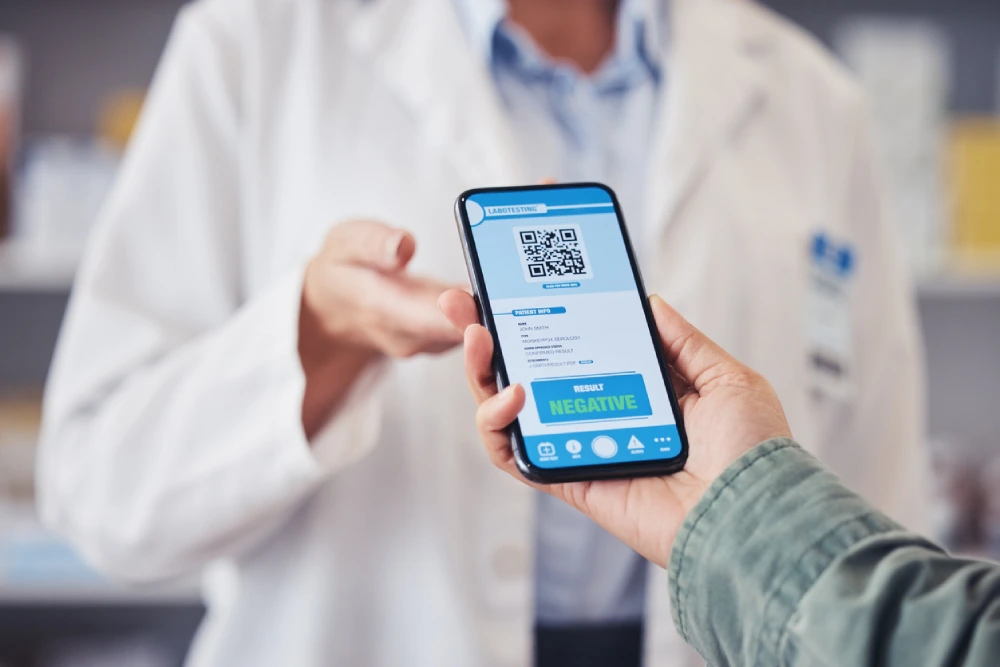In today’s modern world, pharmacy technology is not just evolving; it is redefining what it means to serve your community.
From smarter clinical tools to advanced automation, independent pharmacies now have access to digital innovations that were once reserved for larger corporate players. The challenge is knowing which trends matter most and how to adopt them without losing control of your business.
The right tools can free up more time for patient care, streamline workflows, and give you the competitive edge you need in a changing healthcare landscape.
Let’s explore the pharmacy technology trends shaping 2025 and how they can open new growth opportunities for your pharmacy.
Why Pharmacy Tech Is Hitting a Turning Point in 2025
According to a TELUS Health Pharmacy Trends Report, Canadian pharmacies are poised for a $1.9 billion tech-driven transformation within central fill services alone.
This shift is redefining the role of the pharmacy as a key healthcare destination.
We are seeing a rapid evolution from pharmacies being primarily points of transaction to becoming community-based health hubs. Independent pharmacies are delivering more clinical services, integrating virtual care, and connecting with patients across multiple channels.
For independent owners, particularly those in a member-owned banner like those offered by PharmaChoice Canada, this moment is an opportunity for exceptional.
Our structure gives you the benefits of national buying power and shared innovation while preserving your autonomy. This allows you to embrace the most impactful technology on your own terms, backed by programs and support that align with your community’s needs.
So, what trends can you expect in the near future? Read on to explore some of the most prominent pharmacy technology trends that are up and coming.

Patient Experience Technology
Patients now expect convenience, accessibility, and personalization in every interaction. Technology is helping pharmacies deliver just that.
Key developments include:
- Omnichannel access: Online booking, secure messaging, refill apps, prescription delivery, curbside pickup, and self-service kiosks all make it easier for patients to connect with your pharmacy.
- Virtual care: In-pharmacy consultations for minor ailments, prescription renewals, and remote follow-ups keep patients engaged and reduce barriers to care.
- Loyalty, subscriptions, and care bundles: Flexible programs that reward repeat business and support ongoing health needs without locking owners into a single vendor.
The result is a patient experience that is more consistent and convenient, while also creating new opportunities to strengthen relationships and encourage repeat visits.
Clinical Decision Intelligence
The next wave of pharmacy technology will enable data-driven, proactive patient care.
Clinical decision intelligence tools give pharmacists the ability to catch risks earlier, personalize therapy, and provide targeted interventions that improve outcomes.
These include:
- AI-driven drug interaction checks and high-risk patient flags to prevent adverse events.
- Pharmacogenomics decision support to help tailor treatments to a patient’s genetic profile.
- Digital therapeutics and remote monitoring data that feed directly into care plans.
- Treat-to-target models for chronic conditions, paired with community resources, medication management, and lifestyle guidance.
By adopting these tools, you can provide patients with individualized care plans, improve adherence, and position your pharmacy as a trusted source for advanced health management.
Workflow Automation and Robotics
Operational efficiency remains a top priority for independent pharmacies, and automation is quickly becoming the most effective way to achieve it.
What once required hours of repetitive work can now be completed in minutes with advanced robotics and integrated workflows. This allows pharmacists to focus on clinical care and patient relationships instead of manual processes.
Examples include:
- Robotic dispensing and blister or pouch packaging for improved accuracy and speed.
- Central fill and shared services in co-op models to free up pharmacists for clinical tasks.
- Computer vision, barcoding, and eMAR integration to enhance long-term care services.
Although these technologies can require significant investment, strategic planning and co-operative models can make adoption more practical and cost-effective.
Data Pipes and Interoperability
For technology to truly work for you, it must work with everything else. Interoperability is the foundation that allows different systems to share information securely and efficiently. Without it, valuable patient data is siloed, and the full benefits of technology are lost.
Improved interoperability enables:
- Seamless integration with e-prescription services, lab results, immunization records, and provincial health platforms.
- A unified patient view that reduces duplication and improves care coordination.
Cybersecurity, Privacy, and Resilience
As healthcare becomes more digital, protecting patient data is more important than ever. Cybersecurity is no longer an optional consideration; it is a core business priority that affects compliance, trust, and operational continuity.
Independent pharmacies must comply with PIPEDA and relevant provincial health privacy laws, ensuring consent, audit trails, and secure data handling. Practical safeguards include:
- Multi-factor authentication and immutable backups.
- Network segmentation and vendor risk assessments.
- Cyber insurance and tested incident response plans.
Building resilience now protects your patients, your reputation, and your ability to continue operating in the face of potential threats.

Data and Analytics for Growth
Data-driven decision-making is becoming a competitive necessity. The ability to measure, interpret, and act on trends in your business can reveal new revenue streams, improve patient adherence, and highlight where resources are best invested.
Pharmacies can now:
- Analyze payment mix, category growth, and care gaps to identify service expansion opportunities.
- Use predictive adherence tools to improve patient outcomes.
- Measure ROI for technology investments through time savings, billable services, patient satisfaction, and clinical results.
With co-operative benchmarking, you can compare your results to similar pharmacies in the network, identify strengths, and address gaps without sacrificing independence.
Supply Chain, Inventory, and Shortage Management Tech
Inventory management is becoming increasingly complex due to shortages, rising costs, and the growing demand for specialty medications. New technology can help maintain stock levels, improve forecasting, and ensure compliance with storage requirements.
Key innovations include:
- AI-driven demand forecasting and automated ordering.
- Shortage alerts and therapeutic substitution workflows to maintain care continuity.
- Temperature, pedigree, and traceability tools for high-value biologics and specialty medications.
Workforce Technology
Your team is your most valuable asset, and the right technology can help them work more efficiently, learn new skills, and provide better care. Workforce technology also plays a critical role in maintaining service levels during staffing shortages.
This includes:
- Pharmacy technician onboarding tools to streamline training and free pharmacists for clinical services.
- AI copilots to assist with protocol creation, documentation, and patient education.
- Upskilling programs in clinical decision support, data literacy, and cybersecurity basics.
- Staffing marketplaces to manage shortages and seasonal demand.
Equipping your team with these resources creates a more engaged workforce and a more consistent patient experience.
Funding, Procurement, and Vendor Strategy for Independents
Technology adoption is not only about choosing the right tools; it is also about making smart financial and contractual decisions. Independent owners must ensure that each investment delivers measurable value without limiting flexibility for future needs.
Independent pharmacies should:
- Use ROI models that measure time saved, service revenue gained, and risk avoided.
- Explore cooperative buying and pooled pilots to reduce costs and test solutions before committing.
- Negotiate open API, data portability, uptime SLAs, and security compliance into every vendor contract.
Embracing the Future of Pharmacy
Pharmacy technology trends in 2025 are shaping a future where independent pharmacies can deliver more connected, efficient, and personalized care.
From patient engagement tools and AI-powered clinical decision-making to automation, analytics, and secure data systems, these advancements can save time, improve care, and keep you competitive.
With the right support, upgrading your technology does not mean sacrificing independence. In a member-owned model like PharmaChoice Canada, you can embrace innovation on your terms, backed by the scale, resources, and collaborative strength of our network.
Ready to future-proof your pharmacy? Connect with pharmacy business experts at PharmaChoice Canada to explore the support and freedom our Member-owned banner provides so you can lead your community with confidence in 2025 and beyond.






